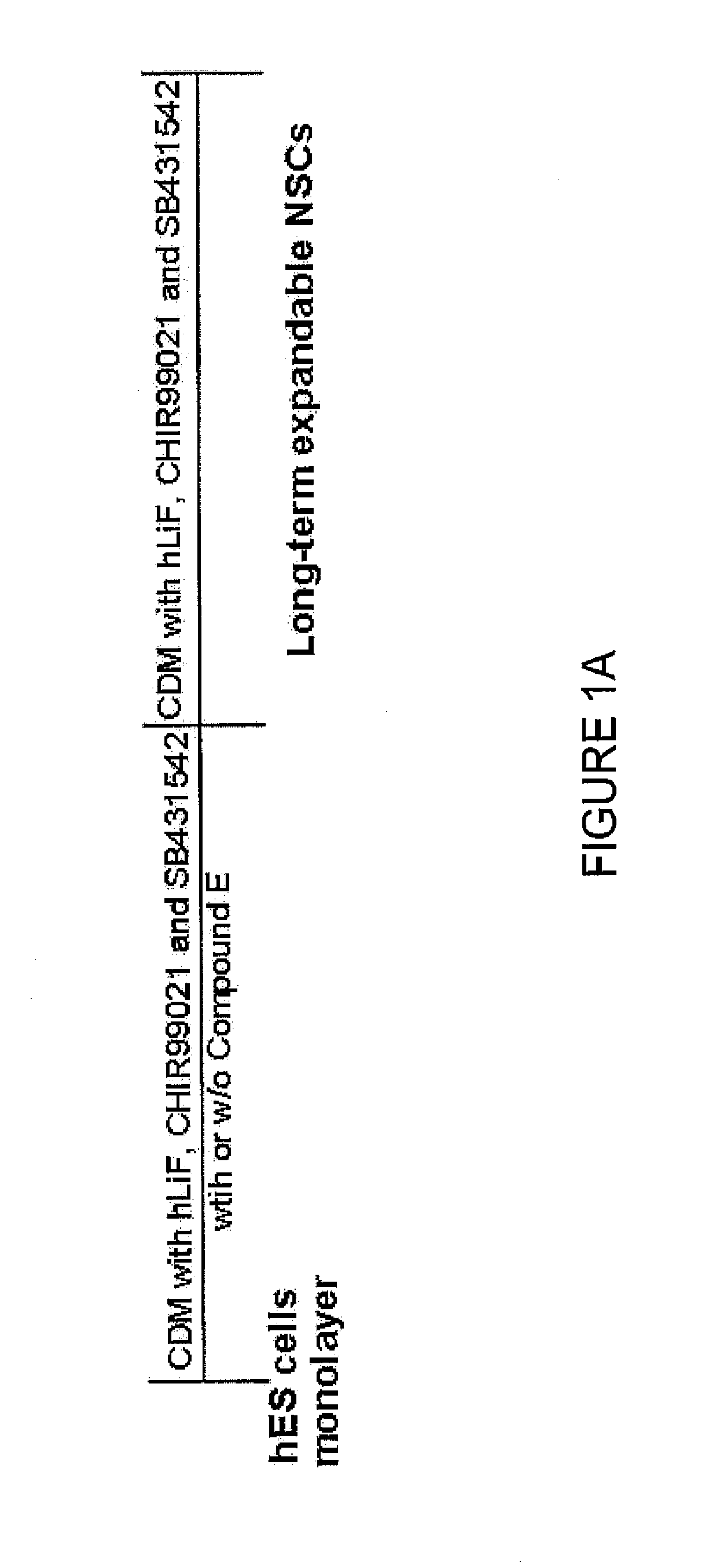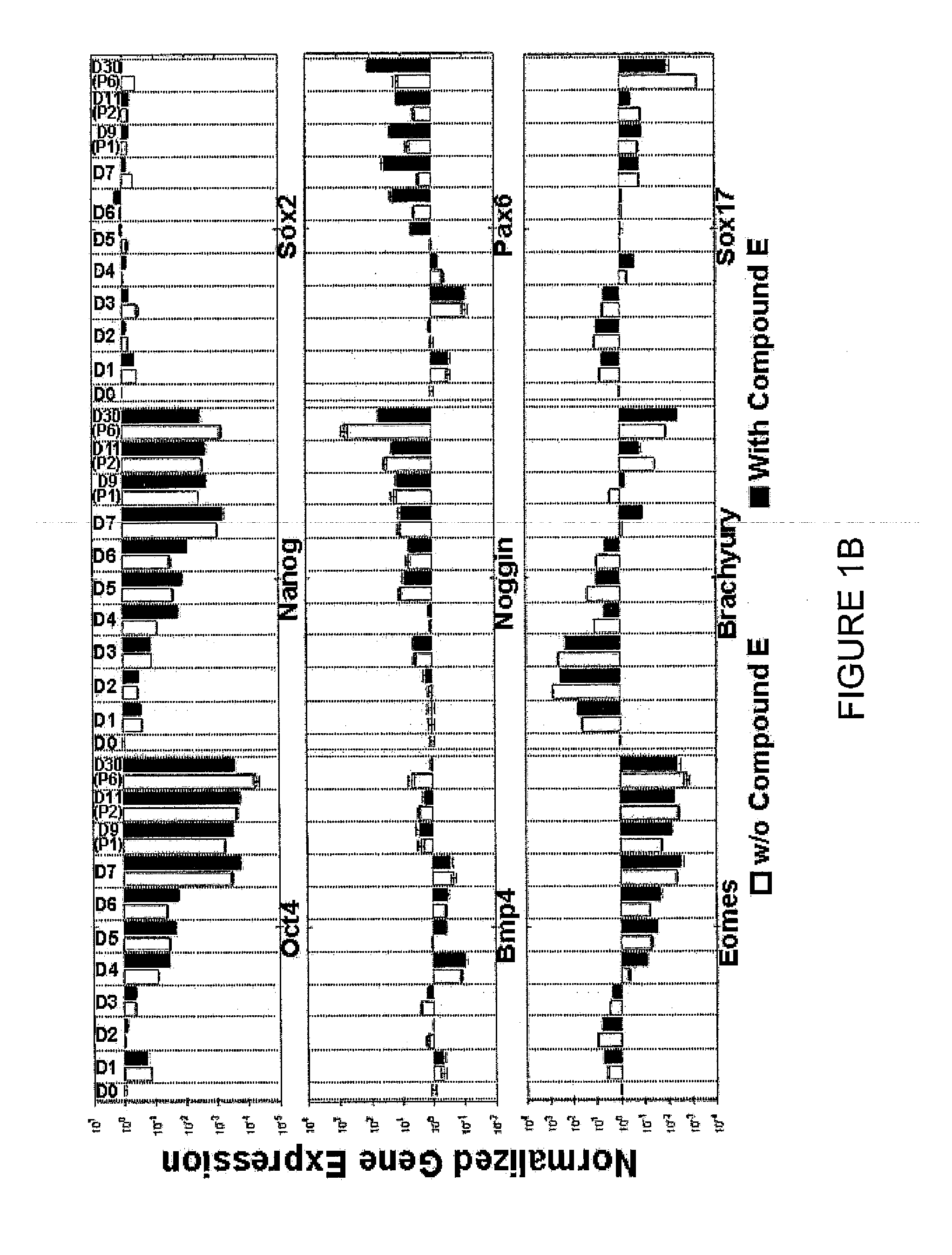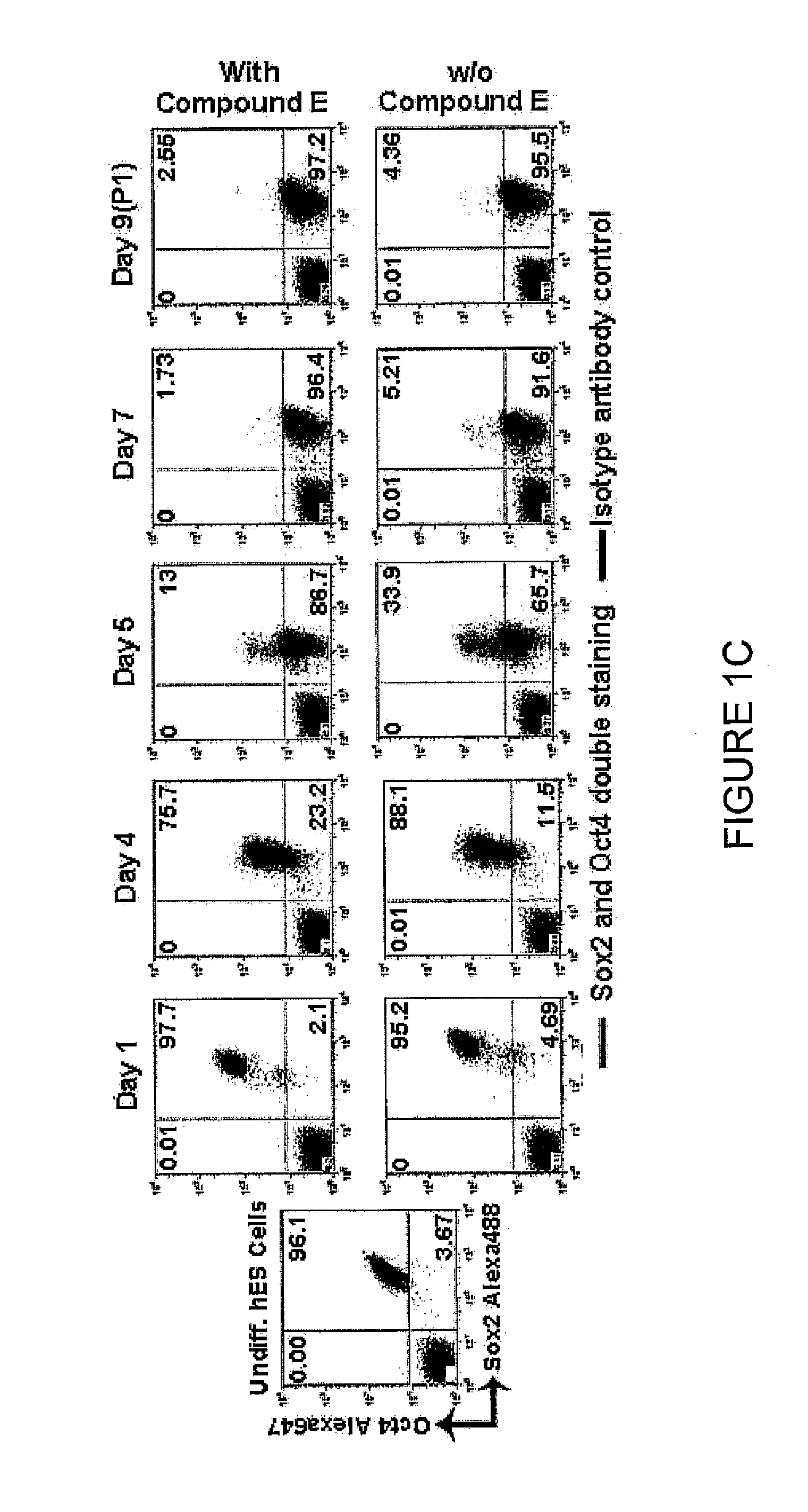Expandable cell source of neuronal stem cell populations and methods for obtaining and usnig them
- Summary
- Abstract
- Description
- Claims
- Application Information
AI Technical Summary
Benefits of technology
Problems solved by technology
Method used
Image
Examples
example 1
Experimental Procedures
[0084]Cell and Culture Conditions.
[0085]hESCs, H1 (passages 40-50), HUES9 (passages 17-30), and HUES1 (passages 20-30) were cultured in DMEM / F12, 20% knockout serum replacement, 1% glutamax, 1% nonessential amino acids, 1% penicillin / streptomycin, 0.1 mM β-mercaptoethanol, and 10 ng / mL bFGF on X-ray inactivated mouse embryonic fibroblasts. Feeder-free culture of hESCs was as described (Yao, S., Chen, S., Clark, J., Hao, E., Beattie, G. M., Hayek, A., and Ding, S. (2006)). HUES9 and HUES1 cells were passaged using Accutase (Millipore) at a dilution of 1:10. H1 cells were passaged using collagenase at a dilution of 1:6.
[0086]Neural Induction.
[0087]hESCs (HUES9 and HUES1) at about 20% confluence were treated with 3 μM CHIR99021 (Cellagentech), 2 μM SB431542 (Cellagentech), 0.1 μM Compound E (γ-Secretase Inhibitor XXI, EMD Chemicals Inc.) in neural induction media containing Advanced DMEM / F12:Neurobasal (1:1), 1×N2, 1×B27, 1% Glutmax, 5 μg / mL BSA and 10 ng / mL hLIF...
PUM
| Property | Measurement | Unit |
|---|---|---|
| Time | aaaaa | aaaaa |
| Density | aaaaa | aaaaa |
Abstract
Description
Claims
Application Information
 Login to View More
Login to View More - R&D
- Intellectual Property
- Life Sciences
- Materials
- Tech Scout
- Unparalleled Data Quality
- Higher Quality Content
- 60% Fewer Hallucinations
Browse by: Latest US Patents, China's latest patents, Technical Efficacy Thesaurus, Application Domain, Technology Topic, Popular Technical Reports.
© 2025 PatSnap. All rights reserved.Legal|Privacy policy|Modern Slavery Act Transparency Statement|Sitemap|About US| Contact US: help@patsnap.com



